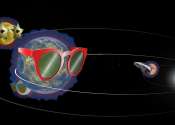How Webb's coronagraphs reveal exoplanets in the infrared
NASA's James Webb Space Telescope has many different observing modes to study planets orbiting other stars, known as exoplanets. One way in particular is that Webb can directly detect some of these planets. Directly detecting ...









